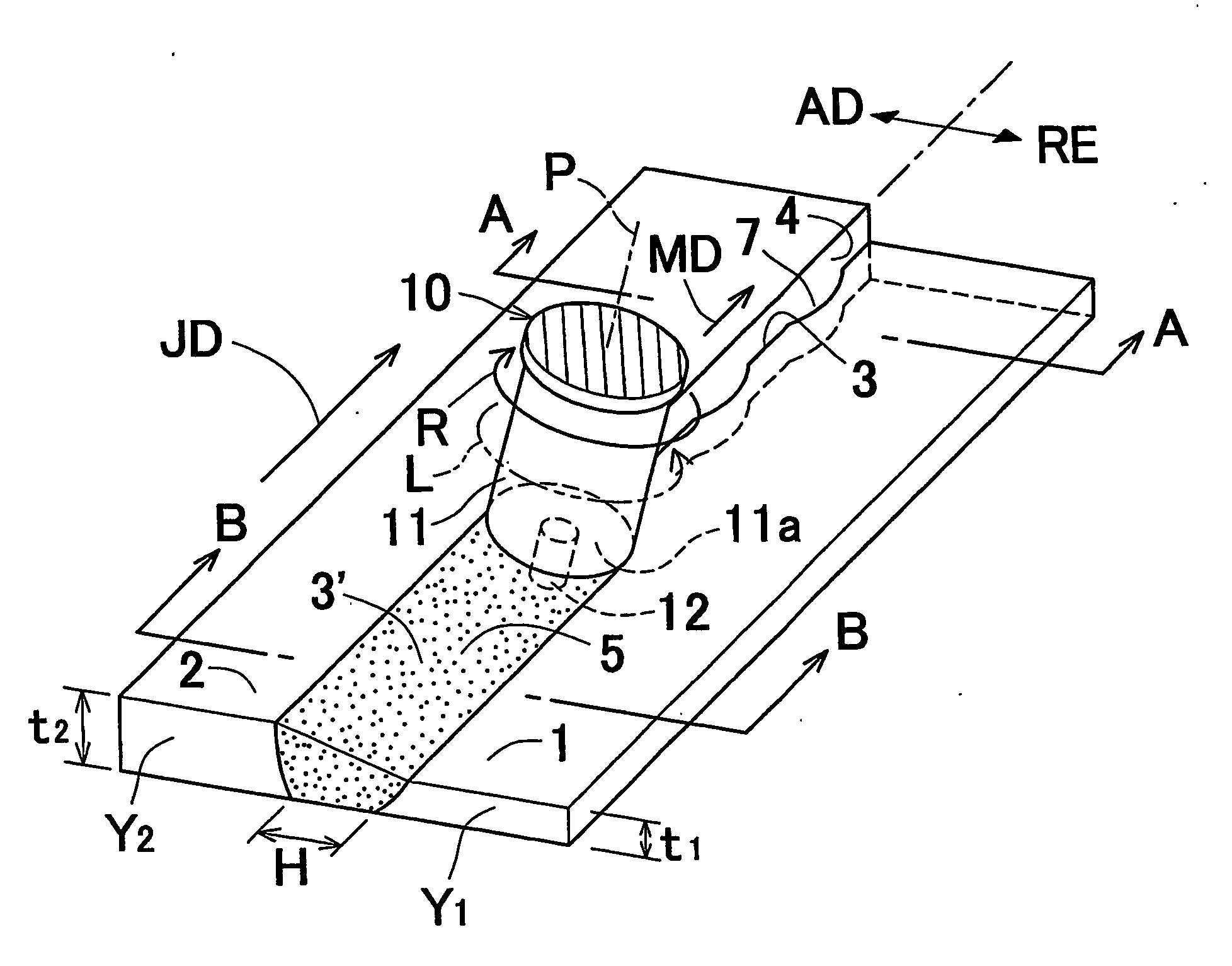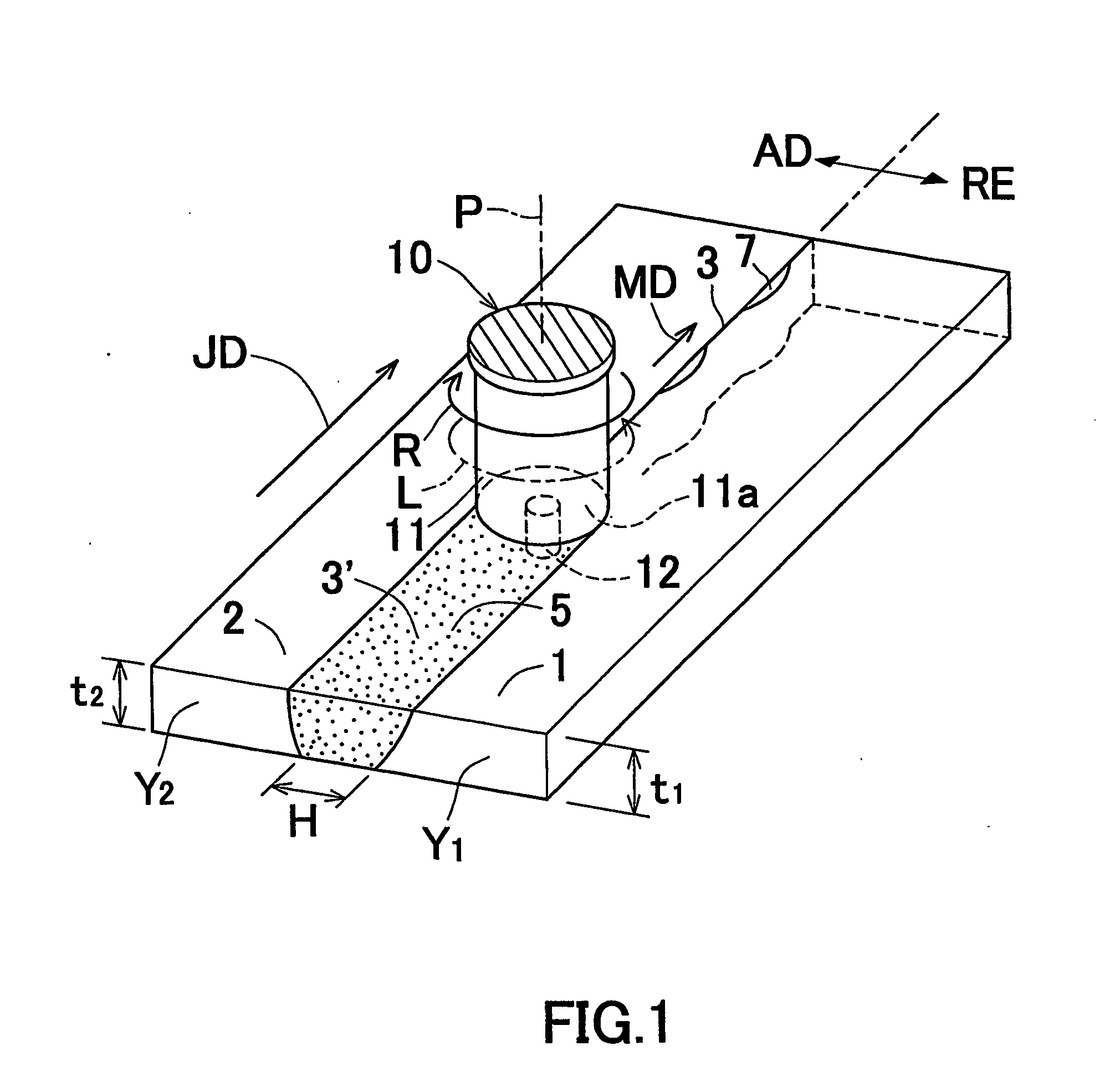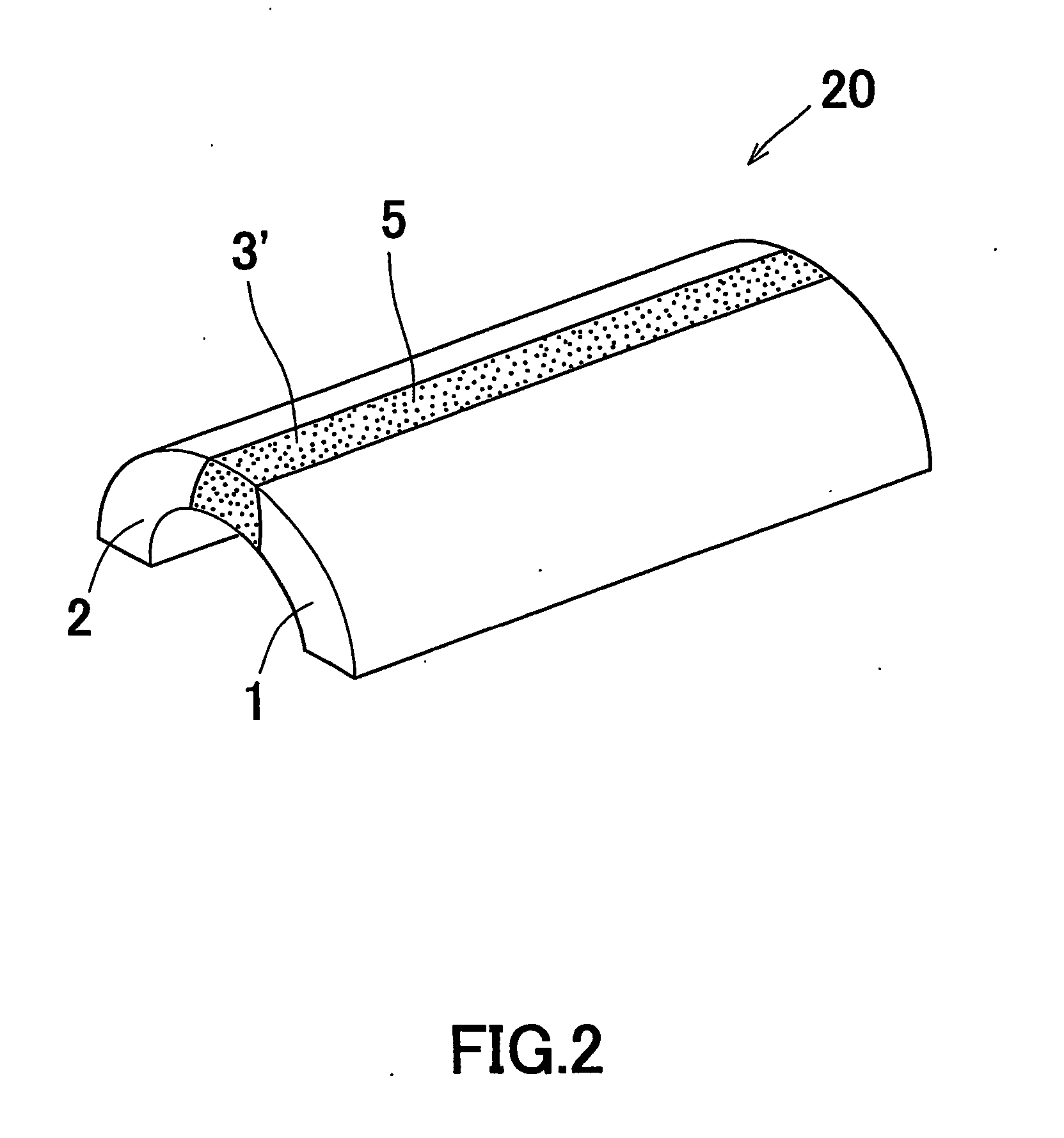Manufacturing method of butt joint, butt joint, manufacturing method of bent member, and friction stir joining method
a manufacturing method and technology of a butt joint, applied in the direction of manufacturing tools, non-electric welding apparatuses, workpiece edge portions, etc., can solve the problem that the bending cannot be performed as intended, and achieve the effect of reducing high temperature deformation resistan
- Summary
- Abstract
- Description
- Claims
- Application Information
AI Technical Summary
Benefits of technology
Problems solved by technology
Method used
Image
Examples
example 1
[0118] A flat plate-shaped aluminum alloy first joining member(JIS-A6061-T6, thickness t1=2 mm) and a flat plate-shaped aluminum alloy second joining member (JIS-A5083-O, thickness t2=2 mm) were prepared.
[0119] It is generally known that the mean deformation resistance of A6061-T6 in the temperature range of 400 to 550° C. is lower than that of A5083-O in the same temperature range. Accordingly, in the aforementioned temperature range, the product of the high temperature deformation resistance Y1 and the thickness T1 of the first joining member 1, i.e., the value (Y1×t1), is smaller than the product of the high temperature deformation resistance Y2 and the thickness t2 of the second joining member 2, i.e., the value (Y2×t2) (i.e., (Y1×t1)2×t2)).
[0120] On the other hand, as a joining tool 10, a joining tool having an end surface 11a of a rotor 11 whose diameter is 12 mm and a probe 12 having a diameter of 5 mm was prepared.
[0121] The aforementioned joining members 1 and 2 were dis...
example 2
[0125] A flat plate-shaped aluminum alloy first joining member(JIS-A5052-O, thickness t1=1 mm) and a flat plate-shaped aluminum alloy second joining member (JIS-A5052-O, thickness t2=2 mm) were prepared.
[0126] Since the material of the first joining member 1 and that of the second joining member 2 are the same, the value (Y1×t1) of the first joining member 1 was smaller than the value of (Y2×t2) (i.e., (Y1×t1)2×t2)).
[0127] The aforementioned joining members 1 and 2 were disposed in an abutted manner with the rear surfaces thereof flush with each other. Then, the rotational direction of the rotor 11 of the joining tool 10 and that of the probe 12 were set so as to coincide with the rotational direction R rotating from the first joining member 1 toward the second joining member 2 at the back side of the joining direction JD. Then, in accordance with the joining procedures shown in the second embodiment, the abutting portion 3 of the joining members 1 and 2 was joined. As the joining...
PUM
| Property | Measurement | Unit |
|---|---|---|
| temperature | aaaaa | aaaaa |
| diameter | aaaaa | aaaaa |
| diameter | aaaaa | aaaaa |
Abstract
Description
Claims
Application Information
 Login to View More
Login to View More - R&D
- Intellectual Property
- Life Sciences
- Materials
- Tech Scout
- Unparalleled Data Quality
- Higher Quality Content
- 60% Fewer Hallucinations
Browse by: Latest US Patents, China's latest patents, Technical Efficacy Thesaurus, Application Domain, Technology Topic, Popular Technical Reports.
© 2025 PatSnap. All rights reserved.Legal|Privacy policy|Modern Slavery Act Transparency Statement|Sitemap|About US| Contact US: help@patsnap.com



